Clancy Tucker's Blog, page 103
October 10, 2019
11 October 2019 - HIDDEN CHICAGO FREIGHT TUNNELS
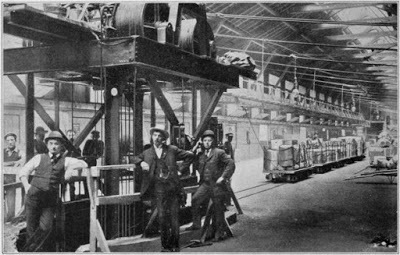
HIDDEN CHICAGO FREIGHT TUNNELS
G'day folks,
Welcome to a century-old network of freight tunnels underneath the city's historic business district.
There’s a vast network of tunnels underneath Chicago that once handled coal and ashes for dozens of buildings connected at their sub basement levels. The tunnels were in operation from 1904 to 1959, and then forgotten about until a catastrophic flood reminded everyone they were there.
Work began on the tunnels in 1899 under the auspices the Illinois Telephone and Telegraph Company, reorganized in later years as the Chicago Tunnel Company. An enormous quantity of blue clay soil was excavated by hand and used as landfill to build up low lying areas on the waterfront.
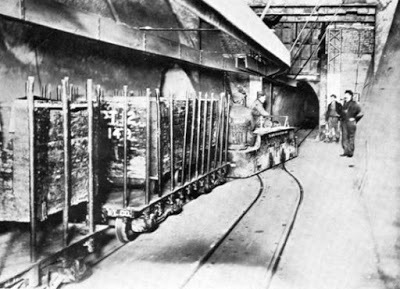
The Chicago Tunnel Company had an aggressive (perhaps brash) business strategy, building 60 miles of tunnels before securing a single client. Once the network was complete they approached downtown buildings and offered an array of services, including telephone and telegraph connections, and coal, mail and merchandise deliveries. And the clients did come; tunnel connections were built to the Board of Trade, City Hall, Merchandise Mart, the Federal Reserve Bank, the Chicago Tribune, the Civic Opera House, the Field Museum, and dozens of others. One of the Chicago Tunnel Company’s more inventive products was “tunnel air” (55˚F year round), which they piped into theaters and hotels as natural air conditioning.

For decades, little electric trains used the tunnels to make their deliveries free from the congestion of surface traffic. Operators navigated using street names painted onto the walls, and avoided collisions using nothing more than a “sight and sound system,” in the generous words of Electric Railway Journal. The tunnels saw their peak usage in the 1940s and 1950s but struggled financially because of tremendous capital investments and increased competition from the trucking industry. In 1959 the Chicago Tunnel Company went out of business and sold their fleet of little trains for $64,000 in scrap.
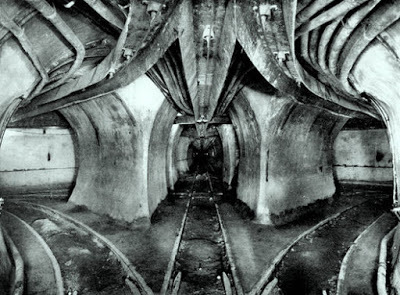
Of course, the tunnels didn’t just go away after that. As memory of this unique bit of infrastructure faded into obscurity the city allowed a few special businesses to continue to use them. The Chicago Tribune, for example, used the tunnels until 1981 to transport newsprint from their paper warehouse to Tribune Tower.
On April 13, 1992 the tunnels jumped back into the headlines in what the press dubbed “The Great Chicago Flood.” Employees of the Great Lakes Dredge and Dock Company driving new river pilings near Kinzie and Canal Street inadvertently punctured a tunnel roof, allowing millions of gallons of water to gush into the network. All the old buildings that had connected to the tunnels decades earlier were flooded, electricity shorted, and records at City Hall were soaked. The incident ended up costing roughly $2 billion in damage. Since then the tunnels have been sealed, and entry is near impossible.
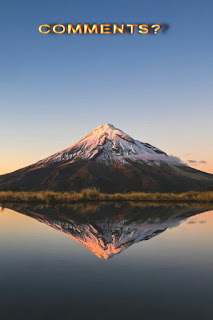
Clancy's comment: Mm ... Interesting, eh?
I'm ...


Published on October 10, 2019 12:47
October 9, 2019
10 October 2019 - 'RED STAR TRAIN' GRAVEYARD IN BUDAPEST, HUNGARY
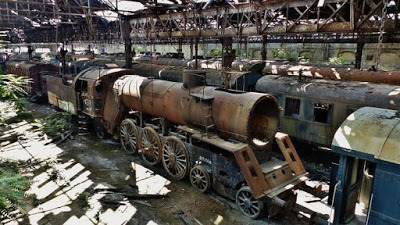
'RED STAR TRAIN' GRAVEYARD IN BUDAPEST, HUNGARY
G'day folks,
Well, here is another abandoned place in the world. The abandoned "Red Star Train Graveyard" is the final rusting place for precious artifacts of train history.
The abandoned Istvántelek Train Yard (Istvántelki főműhely), otherwise known as the “Red Star Train Graveyard,” occupies a vast area of land outside Budapest. More than 100 locomotives and train cars rot away, some in deteriorating depots, others out in the field. Among these are some very rare train engines, and a few cars that are said to have transported prisoners to Auschwitz during the Holocaust.
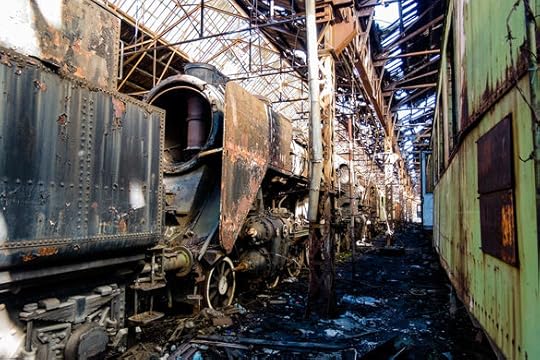
Built at the beginning of the 20th century as a repair yard for the national railway, only a few southern parts of the train yard are still in use, while most of it is abandoned.
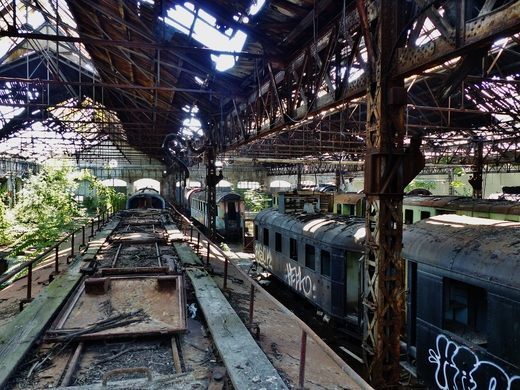
Two large depots, a few smaller sheds and open-air areas are scattered with locomotives and railcars, some of them very ancient, others more recent, from Hungary’s time as part of the Soviet Regime. Some of the trains were brought here to be repaired and exhibited in the Budapest Railway Museum but never made it to the display and were instead left behind in the train yard.
There are a few gems rusting away in the graveyard that are sure to make any train enthusiast’s heart beat faster. A few Hungarian MAV 424 steam engines weigh in at 137 tons and bear a red star on their fronts, which earned the train yard its nickname. There is also an engine of the MAV 301 series, used from 1911 to 1914, which is one of only a few still in existence.
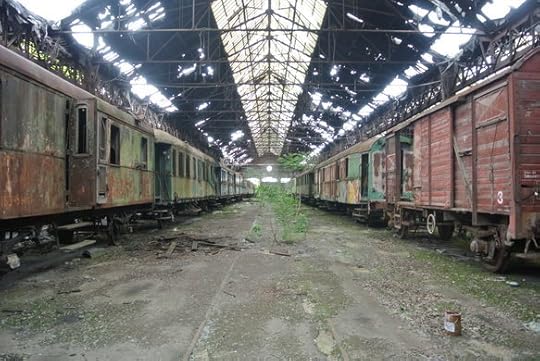
Linked to this engine are several German freight cars, which may be the very ones that transported hundreds of thousands of Hungarian Jews to their death in Auschwitz during Nazi occupation in World War II. Standing in front of the freight cars, one can only imagine the horror, tragedy, and despair that went on inside of them.
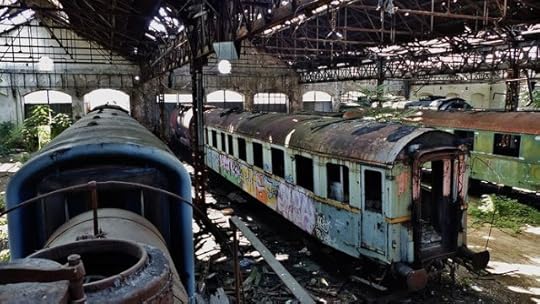
Among the more recent items in the train graveyard are some engines and cars from the Soviet era, inside of which rail tickets from the 1960s can still be found. Altogether the train graveyard offers a great alternative to the usual Budapest tourism sites, not only for train lovers, but for anyone with an eye for history. The engines and cars are slowly losing their battle against nature, and before long the trains may be entirely obscured by overgrown plant life.
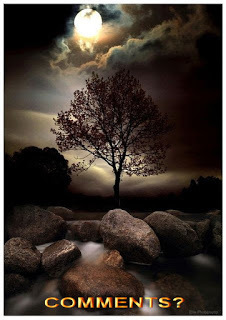 Clancy's comment: Wow, so much history rotting away. Train buffs would be mortified.I'm ...
Clancy's comment: Wow, so much history rotting away. Train buffs would be mortified.I'm ...

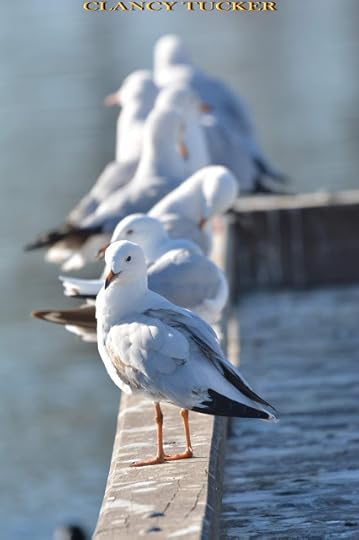
Published on October 09, 2019 13:12
October 8, 2019
9 October 2019 - AMAZING GAPING HOLE IN A REMOTE MOUNTAIN LAKE IN PORTUGAL
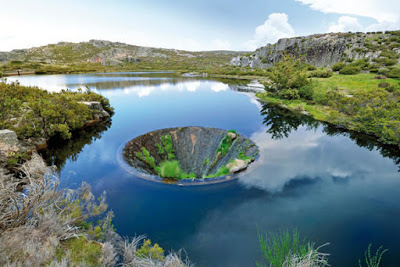
AMAZING GAPING HOLE IN A REMOTE MOUNTAIN LAKE IN PORTUGAL
G'day folks,
I've always tried to present interesting things, but this is one you might not expect. This gaping hole in the middle of a remote mountain lake looks like a portal to another dimension.

Despite its appearance, the surreal-looking opening in Portugal’s Lagoa da Serra da Estrela is actually not a portal to any other time or place, but rather a man made funnel leading into a long tunnel. Though it looks like a natural sinkhole lined with cascading waterfalls, Covão dos Conchos is, in fact, a wonder of engineering.
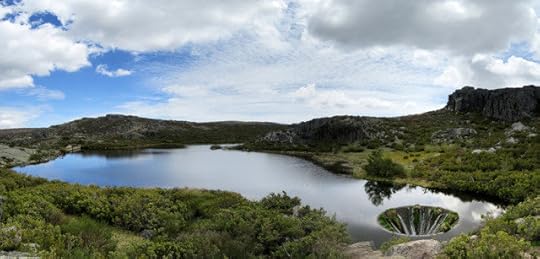
This lake in the Serra da Estrela mountains was artificially created in 1955 during the construction of the nearby hydroelectric dam. Instead of building a pipeline to channel water between Lagoa Serra da Estrela and Lagoa Comprida, the engineers working on the project decided to drill a tunnel through the mountain to connect the two lakes.

The spillway is designed to provide nearby communities with fresh water, but the fact that no other constructions are present nearby makes the funnel seem more like a part of the lake than a part of an infrastructure project. What’s more, there are plants growing around the edges of the concrete and granite drain pipe, making the giant hole look even more natural. This sci-fi-looking spillway was a little-known secret in Portugal until photos of the hole went viral in 2016.
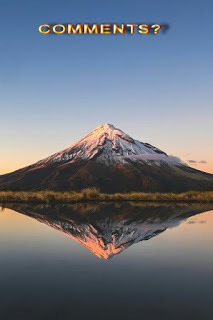
Clancy's comment: Amazing, eh? Extraordinary engineering. I'm ...


Published on October 08, 2019 12:53
October 7, 2019
8 October 2019 - MOVING PICTURES

MOVING PICTURES
G'day folks,
Welcome to some more of those photographs that rock and roll.






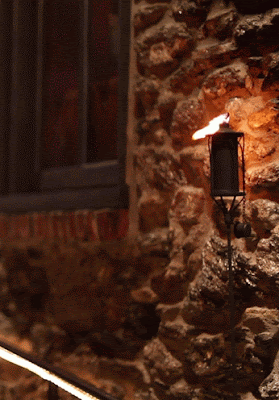





Clancy's comment: The dolphins are still one of my all time faves. And, just when you thought there were no cats included, as there normally are, there was a knock at the door. Hello ...
I'm ...


Published on October 07, 2019 12:28
October 6, 2019
7 October 2019 - THE AWESOME VILLAGE OF MONSANTO IN PORTUGAL
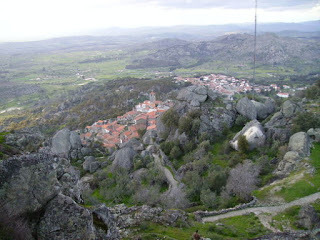
THE AWESOME VILLAGE OF MONSANTO IN PORTUGAL
G'day folks,
Now, here is a 'cool' village ... Especially in summer.
In 1938, the village of Monsanto was dubbed the most “Portuguese town in Portugal.” Yet at first glance, Monsanto certainly does not seem representative of the entire country. For one thing, most Portuguese houses are not sandwiched between gigantic boulders.

Defined by its landscape, Monsanto hangs off a mountaintop overlooking the Portuguese countryside, with views for miles.The mountaintop has actually been extremely important strategic position since prehistoric times. It’s crowned by the remains of a Templar castle, which was partially destroyed by an explosion, in the 19th century.
The village has hardly changed in hundreds of years, and enjoys distinction in Portugal as a living museum. Due to this standing, Monsanto cannot be changed and has retained its classic village charm.
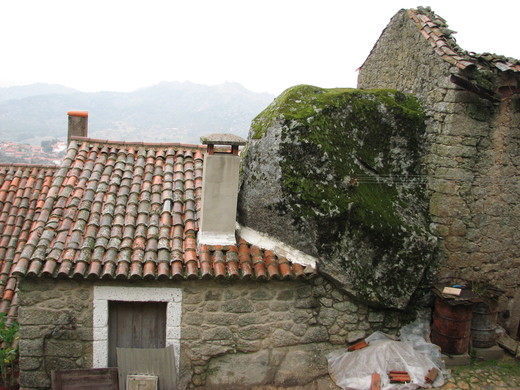
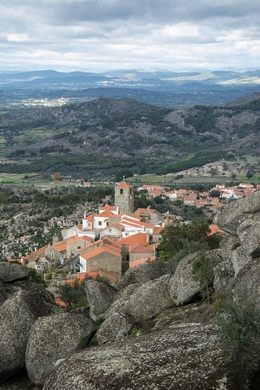
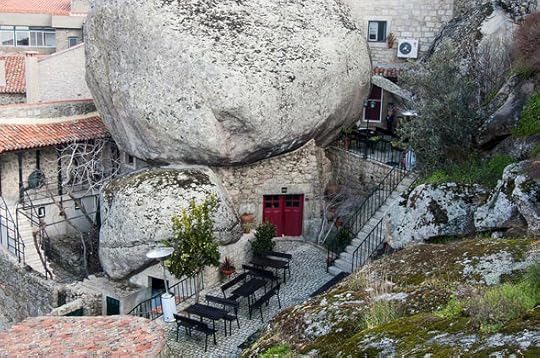
Its tiny streets wind at a steep grade past red-roofed cottages tucked against mossy boulders. Some of the boulders are actually fitted with doors, leading to structures carved right into the rocky landscape.
While the mountainous town seems a bit unorthodox, it is actually a unique twist on classic Portuguese architecture.

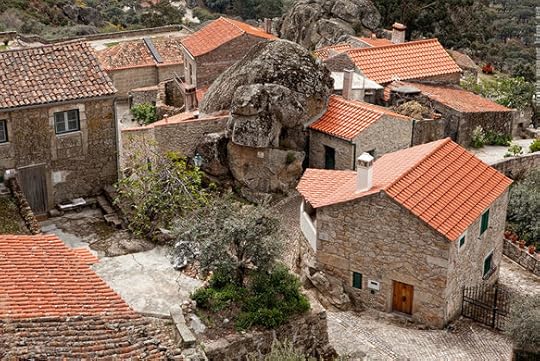
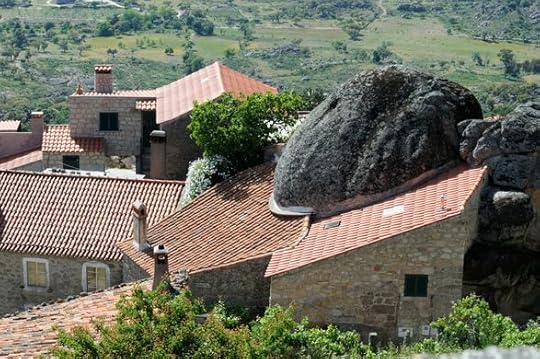
Walking along the cobbled streets it soon becomes evident that Monsanto is a microcosm of Portugal. The architecture even incorporates the Portuguese Manueline style on a number of buildings and a church. While it certainly represents the classic Portuguese village style, visitors will no doubt be more impressed with the cottages built in boulder chic than medieval Romanesque or Manueline.
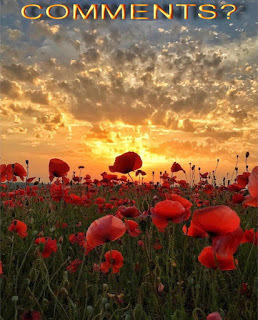 Clancy's comment: What a beautiful village. It certainly would be a great writer's retreat.I'm ...
Clancy's comment: What a beautiful village. It certainly would be a great writer's retreat.I'm ...


Published on October 06, 2019 11:35
October 5, 2019
6 October 2019 - ELEPHANT POO POO PAPER PARK IN THAILAND

ELEPHANT POO POO PAPER PARK IN THAILAND
G'day folks,
The most revered animal in Thailand is the elephant, known in Thai as 'Chang'. Having said that, I bet this post will surprise you.
Chiang Mai’s Elephant Poo Poo Park brings a whole new meaning to eco-tourism. The interactive outdoor museum introduces visitors to the process of making paper from a rather unconventional source: elephant poo.

Making paper from elephant poop is a sustainable, eco-friendly alternative to traditional tree-based products. By not using trees, it helps reduce deforestation and makes sure the abundance of animal waste isn’t wasted. The paper is entirely sanitary and stink-free.

The process of transforming elephant poop into everyday paper is actually pretty straightforward. Once workers have scooped the poop and gathered it, they then wash the waste so that only the plant fibers remain. The fibers are then boiled and sanitized, then mixed with other non-wood pulp fibers. Finally, the intriguing mixture is screened and dried, just like typical wood-based paper has been for thousands of years.

Visiting the Elephant Poo Poo Park gives people an up-close encounter with the whole process. You’re even invited to get involved, so be prepared to roll up your sleeves and get your hands dirty. The park also has information about traditional paper making, which began in China nearly 2,000 years ago. In addition to the tour, people can check out the cafe and “poo-tique” to pick up souvenirs.

Clancy's comment: Well, there ya go. Maybe we could do the same here in Australia with Roo Poo! Just a thought...
I'm ...


Published on October 05, 2019 12:55
October 4, 2019
5 October 2019 - ICEBERG ALLEY IN NEWFOUNDLAND AND LABRADOR
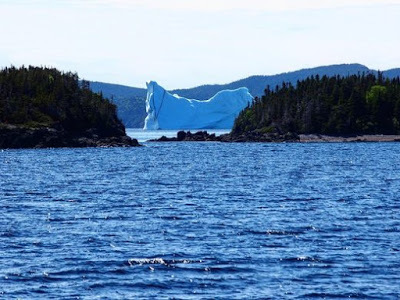
ICEBERG ALLEY IN NEWFOUNDLAND AND LABRADOR
G'day folks,Hundreds of enormous icebergs drift through this waterway every year. Iceberg Alley refers to a stretch of the Atlantic Ocean that goes from the Arctic to Newfoundland. Most icebergs drifting through Iceberg Alley come from the coast of Greenland, when in the spring and summer, chunks of glaciers break off and north-south currents take them along the Baffin Bay and into the Labrador Sea, where they eventually melt. A smaller percentage of these icebergs comes from the Canadian shoreline. Currents transport these behemoths from Baffin Bay through the David Strait into the Labrador Sea, and eventually along the eastern and western shores of Newfoundland.
 The enormous chunks of ice are approximately 10,000 years old. It’s estimated between 400 and 800 medium and large icebergs flow along Iceberg Alley every year. Their speed depends on their shape and size, winds, currents, and waves, but the average is around 0.4 miles per hour. As for the expression “tip of the iceberg,” it comes from the fact that only about 10 percent of the iceberg is above water.
The enormous chunks of ice are approximately 10,000 years old. It’s estimated between 400 and 800 medium and large icebergs flow along Iceberg Alley every year. Their speed depends on their shape and size, winds, currents, and waves, but the average is around 0.4 miles per hour. As for the expression “tip of the iceberg,” it comes from the fact that only about 10 percent of the iceberg is above water.All six types of icebergs pass through Iceberg Alley. Tabular icebergs are flats slabs of ice, with the width vastly greater than the height. Blocky icebergs have steep sides and clear-cut angles, resembling truncated pyramids. Wedged icebergs have one steep slide and one sloping side. Dome icebergs have a rounded top. Pinnacle icebergs have one or more steep pinnacles protruding upward. Dry dock icebergs are U-shaped.

As icebergs drift south, warmer waters accelerate melting, which makes them dangerously unpredictable. It was one of these icebergs that in 1912 sank the Titanic off the coast of Newfoundland. Nowadays, icebergs are monitored using satellites that detect medium and large icebergs, but not usually small ones, which have become the most dangerous kind for smaller boats.
In 2018, a particularly large iceberg was drifting unusually close to the shores of a Newfoundland village called Ferryland, and the image of the giant iceberg dwarfing the village’s houses went viral. This particular iceberg became grounded in 330-foot deep waters, which proved to be shallow relative to its size.

Local breweries use the pure water of these icebergs to make vodka, gin, rum, and beer.
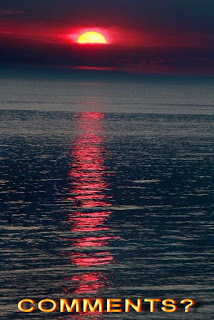 Clancy's comment: What a sight, eh? Imagine waking up to see one of these giants cruising past.I'm ...
Clancy's comment: What a sight, eh? Imagine waking up to see one of these giants cruising past.I'm ...


Published on October 04, 2019 13:15
October 3, 2019
4 October 2019 - ALISON O'DONNELL - GUEST MUSICIAN AND AUTHOR

ALISON O'DONNELL - GUEST MUSICIAN AND AUTHOR -
G'day folks,
Well, here is my interview with an inspiring musician and author.
Welcome, Alison ...
1. TELL US A LITTLE ABOUT YOURSELF AND YOUR creative JOURNEY.I started singing at the age of 16 after my uncle saw me in a school talent show and hired me on the spot to front his band. I caught the creative bug and have been exploring my talents ever since. When my now ex-husband said married women don’t belong on stage, I had to quit singing. After we got divorced, I decided to try my hand at stand-up comedy and did well, so I kept at it. But then I became pregnant and needed to focus on single parenthood. I became a teacher so I could have my daughter’s hours. I always loved writing and words, so it was high school English for me, helping teens improve their writing skills. I also tutored illiterate adults. It seemed fitting that I should one day write a book. After so many horrible online dating experiences, I decided I could combine my comedy and writing skills into a book that would be both humorous and practical—so that others don’t have to suffer as I have! And now I have a children’s book in the works. Got a few more ideas in other genres. I have genre ADD, apparently.
2. WERE YOU INTERESTED IN MUSIC AS A KID? WHAT TYPES OF MUSIC? I grew up listening to the radio a lot, so classic 70s rock has always been a favorite. As for books, I read murder mysteries or spy intrigue. Authors such as James Patterson and Nelson DeMille are favorites.
3. WHEN AND HOW DID YOU BECOME A MUSICIAN? You know I started singing in bands at 16. At the age of nine, I took piano lessons from a nun at school. At 12 I took guitar lessons from another nun, and parochial schools tend to have students singing in church at a young age, so my vocal pipes got strengthened early. Still, I spent my allowance on private singing lessons for a while. At 17 I got curious about bass guitar and studied that. And while waiting for our band’s guitarist, always late for practice, I got playing pointers from our drummer (musical ADD as well). Writing, I started reading at a young age and loved books. School teachers would encourage us to write stories using our weekly vocabulary words, and I ate that up each week! I went to college for photo journalism (BA in Mass Communications) and got a job writing corporate newsletters for the US Postal Service. But that was so corporate. Once I began teaching English, it was only fitting that I write a book! (It’s said, “Those who can’t do, teach.” Well, I DID do!)
4. WHAT DO YOU ENJOY MOST ABOUT YOUR JOB? I get to travel and meet cool people. It was never about the money, which is non-existent.
5. WHAT IS THE HARDEST THING ABOUT BEING A MUSICIAN/AUTHOR? Well, there ARE bills to be paid… so I work at other odd jobs to make money. But this doesn’t necessarily take away from my writing time. I make the time when the mood strikes. Getting people interested in what I do is very difficult. I’m self-published, so there’s no big publishing firm marketing around the world for me while I put my feet up. I sell one book at a time, either at book signings or just word of mouth.
6. DO YOU WORK FOR YOURSELF, OTHERS OR BOTH? For myself. Although Amazon and my hired publisher take a piece of each sale.
7. WHAT WERE YOU IN A PAST LIFE, BEFORE YOU BECAME INVOLVED IN MAKING MUSIC? I had various odd jobs as a kid, including egg candler at a factory! You’d be amazed what can happen to a chicken’s egg before the perfect ones get to your market!
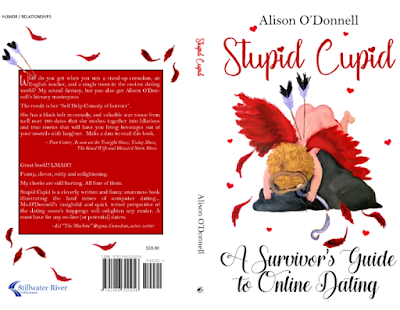
8. WHAT IS YOUR GREATEST ACHIEVEMENT? Completing the book! Or, having a child. But if we’re talking creatively, that book took two years to complete and STILL I wasn’t ready. The publisher said, “Eventually you have to hand it over.” So I did. But I still go back to it wishing I’d said THIS or THAT. A second edition is forthcoming. Once I raise the money.
9. WHAT ARE YOU WORKING ON AT THE MOMENT? The Adventures of Gizmo. It’s a children’s book, but aren’t we all kids at heart? Gizmo was an AWESOME dog I had, a few dogs back now, who got himself into all kinds of crazy scraps. I thought it would make a good story book. And, once it’s done (need money for illustrations…), I’ll have two different books on my sales table, which will attract more attention for me.
10. WHAT IS YOUR FAVOURITE TYPE OF MUSIC? I love it all, but still going with classic 70s rock.
11. WHAT INSPIRES YOU? I love seeing people moved to tears, hearing about hair-raising moments—like when a great singer hits an amazing note with feeling. When those things happen, I wanna BE that person, or at least be the person who causes that sensation.
12. DO YOU HAVE A COLLECTION OF MUSIC? WHAT? My collection is so varied in every direction (music ADD, haha). I have disco on 8 track, Barbra Streisand on vinyl, baroque on cassette, jazz on CD… Ironically, I don’t own an mp3 or anything, I just listen to Sirius radio and keep changing the channel to whatever strikes my mood.
13. DO YOU HAVE ANY TIPS FOR EMERGING MUSICIANS/AUTHORS? Stay true to yourself, and try to keep creative ownership. Nobody else should own your stuff. Nothing sucks worse than losing good stuff to someone else who puts his name on it and profits from it. Ask around for a reputable manager, never hand over material without representation!
14. DO YOU HAVE A PREFERRED SCHEDULE? Yes! It’s called: whenever I want!
15. DO YOU HAVE A FAVOURITE PLACE OR TIME TO WORK? I like weekend festivals. Lots of people come out. I’m a people watcher. Everyone’s in a happy mood at festivals.
16. WHAT IS YOUR GREATEST JOY IN YOUR WORK? I love the creative process. Sitting down to bang it out. Perfecting it over and over and over and… hearing from adoring fans how much they loved what I did.
17. WHAT’S THE GREATEST COMPLIMENT YOU’VE EVER RECEIVED? A gay man once told me he’d go straight for me. Does that count? But that’s got nothing to do with my work. Musically, someone once told me I had the kind of commercial voice she could listen to all day. As for the book, I love when people tell me they ‘laughed so hard!’ and think I have something really special here. Still waiting for everyone else to catch on.
18. DESCRIBE THE FUNNIEST MOMENT YOU EXPERIENCED IN YOUR WORK? The entire book is a collection of funny moments! My best story? A guy with dentures really liked me and asked for a kiss goodbye after our lunch meet-and-greet. I said, “OK. But no tongue!” Well that NEVER works. He slipped me the tongue, and when he did, his dentures dislodged. A piece of meat was deposited to the back of my mouth. Yeah.
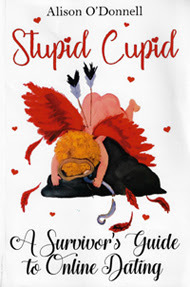
19. WHAT WAS THE WORST COMMENT YOU EVER RECEIVED? I was told the book is repetitive. It is in some spots, but intentionally!! I keep coming back to some main points that need to be stressed. But after hearing this, I feel compelled to make some changes in this regard for the second edition.
20. WRITERS ARE SOMETIMES INFLUENCED BY THINGS THAT HAPPEN IN THEIR OWN LIVES. ARE YOU AS A CREATIVE MUSICIAN? Of course! The book is a collection of what happened to me, told in my sarcastic, witty way! I now am a comedian with a funny book under my belt. I’ve done something amazing for the world of comedy that not every comedian does.
21. HOW MANY SEPARATE PIECES OF MUSIC/books HAVE YOU PRODUCED? Book two in the works…
22. HAVE YOU WON ANY PRIZES OR AWARDS? Nothing official. Yet. I’m hoping the book draws attention from the RI Comedy Hall of Fame, which to date has only crowned stage comedians. I did all that, and more!
23. OTHER THAN MAKING MUSIC, WHAT ELSE DO YOU LOVE? Having this ‘genre’ ADD, I’m all over the place! Also, as a kid I’d groomed myself to be an FBI agent, so I took lessons in all kinds of crazy things so I could be placed in any undercover assignment! I’m a certified bar tender, teacher and scuba diver. Musician, fast typist, yoga instructor, calligraphy, mother, grandmother, writer, tarot reader, linguist—you name it! And I love the great outdoors—kayaking, hiking, camping, fishing…
24. DESCRIBE YOUR PERFECT DAY. Wake up with a coffee, sitting on a deck overlooking a lake and the sunrise. Go kayaking until it’s too warm to do so. Take a swim, make love, shower and nap. Go for a hike and have an amazing dinner. See a band, whether jazz or rock, mebbe sing a blues tune with the band. Read a book while someone rubs my feet or engages me in a deep conversation. Watch a little TV (cuddling optional) and fall asleep right there.
25. WHAT ARE YOUR PLANS FOR THE FUTURE? I still don’t know what I wanna be when I grow up. I only know I don’t wanna grow up. I’ve had a huge bucket list that I’ve mostly completed! Besides writing a few more books, I’d like to travel more of the world. Should be done seeing all 50 US states in a few years; looking to see cultures very different than my own. Also considering teaching English in China and/or Thailand for a time.
26. IF YOU CREATED MUSIC FOR THE LEADERS OF THEWORLD, WHAT WOULD IT BE ABOUT? I don’t foresee world leaders listening to what I have to say. I’ve long felt rap artists have the attention of our teens. Instead of ‘kill whitey’ and ‘kill cops’, why don’t rappers use their powers for GOOD? Let’s write and sing about peace, love, charity, hope, family… Maybe I’ll write a young adult book that preaches manners from the main character. Let’s have kids learn a useful thing or two while they read fiction, since they aren’t into history until later in life. “No littering!” Make a change for the better!

AMAZON

Clancy's comment: Thank you, Alison. You have an inspiring story to tell. Love ya work!
I'm ...


Published on October 03, 2019 12:57
October 2, 2019
3 October 2019 - THE ELEPHANT NATURE PARK IN CHIANG MAI, THAILAND

THE ELEPHANT NATURE PARK IN CHIANG MAI, THAILAND
G'day folks,Thailand's distressed elephants find peace at this Chiang Mai sanctuary. Set in Thailand’s Chiang Mai province, Elephant Nature Park provides a sanctuary to rescued elephants from around the country. Originally founded in 1990, Elephant Nature Park is roughly 60 kilometers from Chiang Mai city, tucked away in the picturesque hills of Northern Thailand. Serving as a rescue and rehabilitation center for elephants from around the country, Elephant Nature Park is—simply put—the ethical way to enjoy the company of a pachyderm when in Asia.

In Thailand, elephant populations have decreased significantly from 100,000 a century ago to now a measly 3,000 estimated elephants remaining. The decline in elephant numbers is namely due to the animals being used for the tourism and logging industries, which subjects these magnificent creatures to harrowing abuse.
For tourists, riding an elephant or purchasing a painting from a pachyderm may seem harmless enough, but it is the “training” techniques used to have the animals perform such feats that are cause for concern. Mahouts—a term for men who work with elephants in Southeast Asia—often subject their animals to barbaric forms of physical abuse to intimidate, scare, and ultimately break the spirit of the elephant.

At Elephant Nature Park, the rescued elephants who arrive at the sanctuary can often come with broken bones, psychological issues, and baring the scars of years of abuse. The silver lining is Elephant Nature Park fights to save these animals and give them a stress-free environment where volunteers can spend time with the elephants in an ethical way.
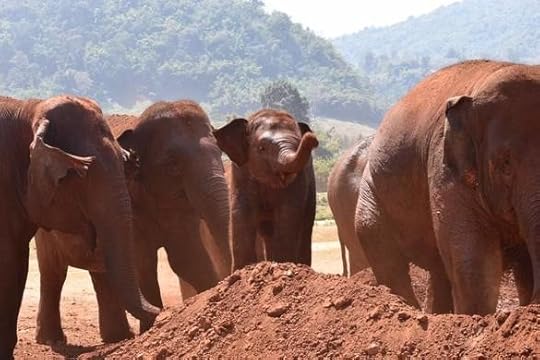
From feeding the elephants copious amounts of watermelon to walking alongside them as they meander down the river, to simply watching them play in the mud, Elephant Nature Park puts the focus on the wellbeing of its animals. In short, a visit to this sanctuary is how animal tourism should be: putting the animal first.
 Clancy's comment: Whilst you are there, try a beer that is named after this most revered animal - Chang Beer.
Clancy's comment: Whilst you are there, try a beer that is named after this most revered animal - Chang Beer.I'm ...


Published on October 02, 2019 13:51
October 1, 2019
2 October 2019 - WISE WORDS FROM GEORGE ORWELL
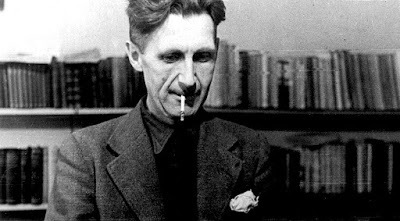
WISE WORDS FROM GEORGE ORWELL
G'day folks,
Eric Arthur Blair, better known by his pen name George Orwell, was an English novelist and essayist, journalist and critic, whose work is characterised by lucid prose, awareness of social injustice, opposition to totalitarianism, and outspoken support of democratic socialism.
George Orwell, an English novelist, essayist, journalist, and critic was a man of strong opinions, who wrote about major topics related to the political views and movements of his times. Animal Farm and Nineteen Eighty-Four are two of his best-known novels, both of which were turned into films and enjoyed incredible popularity.
His work greatly impacted political culture. In fact, he was such an influential writer that The New York Times ranked Orwell second on the list of 'The 50 greatest British Writers since 1945'. He had a high moral sense and respect for justice. Below are some of George Orwell's most well-known quotes that will make you stop and think, courtesy of BabaMail.
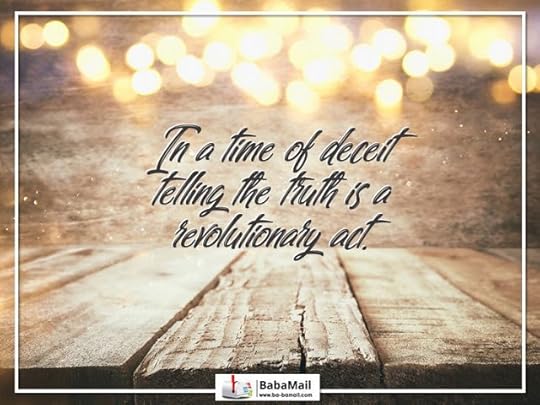











Clancy's comment: Mm ... All of these are probably more relevant today.
I'm ...


Published on October 01, 2019 13:35



